Model Of Kayak, Paddles And Equipment Item Number: E7477-0 from the National Museum of Natural History
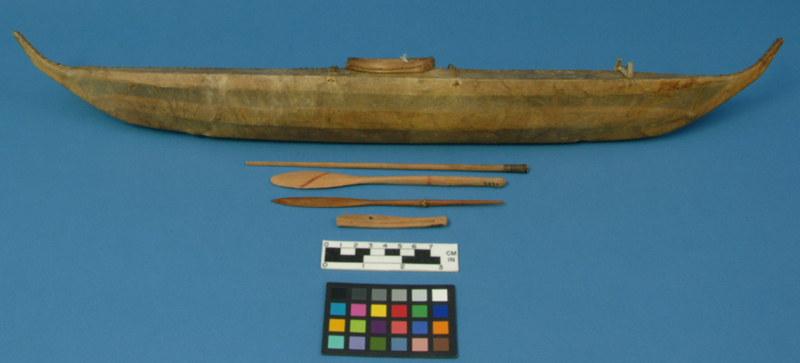
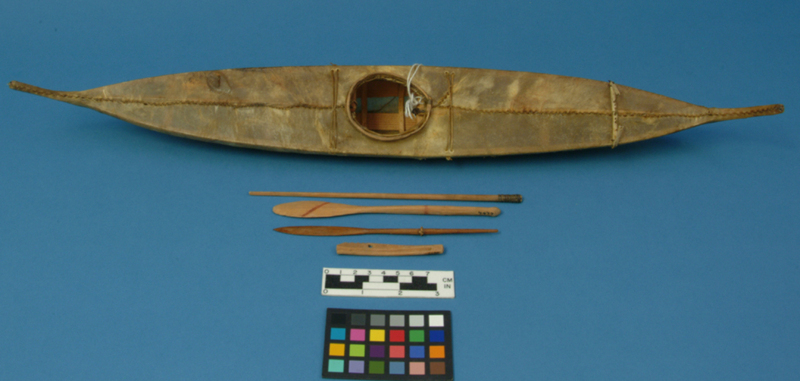
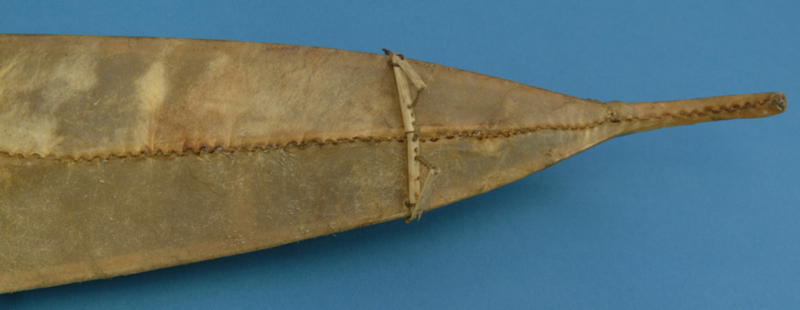
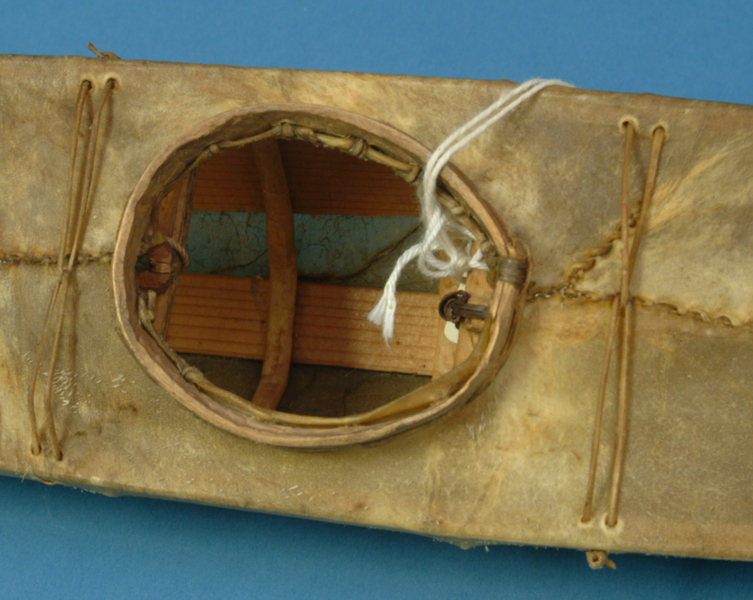
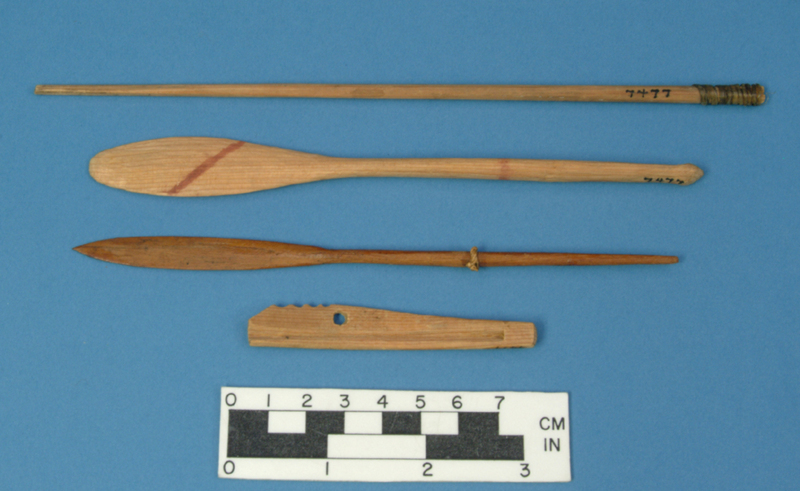
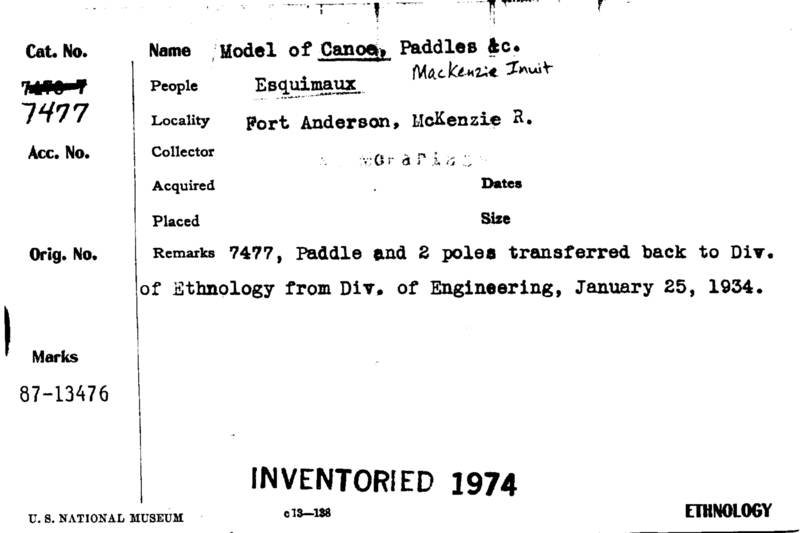
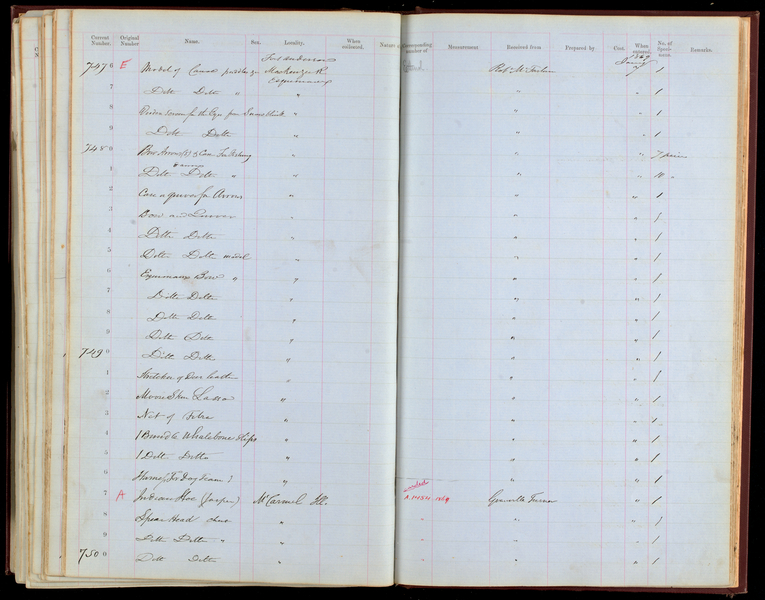

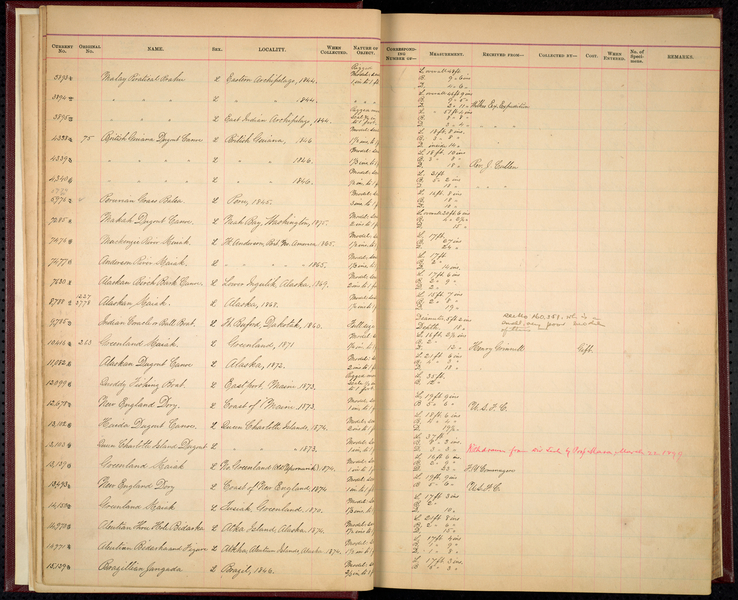
Notes
FROM CARD: "7477, PADDLE AND 2 POLES TRANSFERRED BACK TO DIV. OF ETHNOLOGY FROM DIV. OF ENGINEERING, JANUARY 25, 1934. INVENTORIED 1974. LOAN GLENBOW NOV 13 1987. LOAN RETURNED NOV 25 1988. ILLUS.: THE SPIRIT SINGS. CATALOGUE, GLENBOW-ALBERTA INST., 1987, #A94, P. 130." See Collins boat MS. p. 820.Source of the information below: Inuvialuit Pitqusiit Inuuniarutait: Inuvialuit Living History, The MacFarlane Collection website, by the Inuvialuit Cultural Resource Centre (ICRC), Inuvik, N.W.T., Canada (website credits here http://www.inuvialuitlivinghistory.ca/posts/12 ), entry on this artifact http://www.inuvialuitlivinghistory.ca/items/200 , retrieved 2-5-2020: Model of a kayak with prominent upturned ends that are distinctive of Inuvialuit kayaks. The frame is made from wood, and the cover is made from several pieces of hide stretched over the frame and stitched together. A seam running lengthwise on the deck has been stained with red ochre. Deck lashings made from braided sinew for holding hunting implements are attached fore and aft of the cockpit and a lance holder made from antler or bone is attached to the deck near the front end. The model includes a throwing board, the shaft of a lance with a wrapping of baleen at the tip end (the tip is missing), a double-bladed paddle, and a paddle with a single blade. Both paddles have been decorated using red ochre. More information here: http://www.inuvialuitlivinghistory.ca/item_types/32: Inuvialuit used lightweight kayaks for hunting whales and seals, setting and hauling fishnets, and spearing swimming caribou. The frames were made from driftwood, and skins of seals or beluga whales were used for covers. Inuvialuit kayaks had distinctive upturned stems that were useful for lifting them from the water. Full-sized kayaks would have been difficult to send to the Smithsonian Institution, and MacFarlane instead collected accurately made models.
Item History
- Made in Northwest Territories, Canada
- Collected in Northwest Territories, Canada
- Received from Roderick R. MacFarlane on January 7, 1869
What
- Name
- Model Of Kayak, Paddles And Equipment
- Identification Number
- E7477-0
- Type of Item
- kayak model, paddle model, lance model and atlatl model
Who
- Culture
- Eskimo, Inuit and Inuvialuk
- Received from
- Roderick R. MacFarlane
Where
- Holding Institution
- National Museum of Natural History
- Made in
- Northwest Territories, Canada
- Collected in
- Northwest Territories, Canada
When
- Acquisition Date
- on January 7, 1869
Other
- Accession Number
- 69A00012